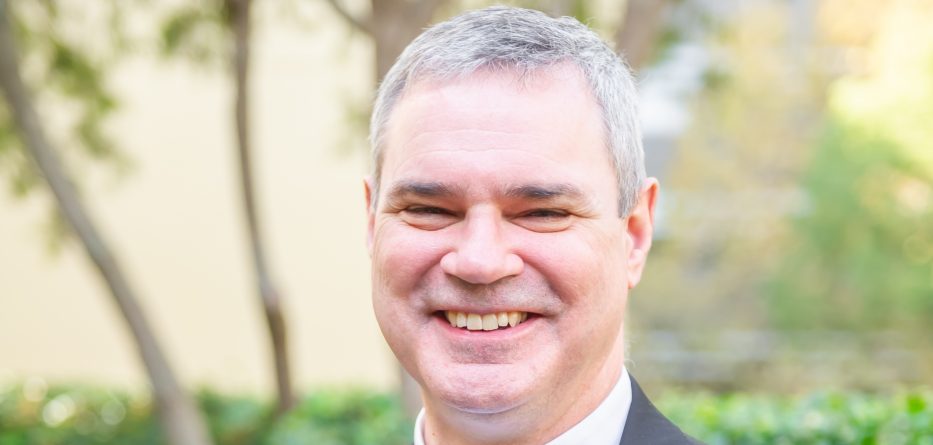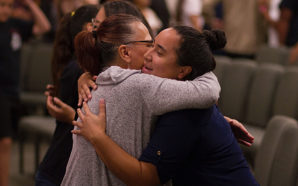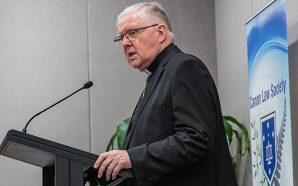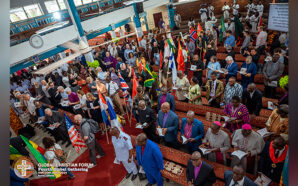Archbishop Peter A Comensoli’s address on Humanae Vitae from “Hope for a New Springtime” Conference. 21 July 2018.
A Vision of Hope: Humanae Vitae as an adequate anthropology
At the time of the release of Humanae Vitae (HV), Pope (St) Paul VI made the following remarks about his teaching letter.
“The knowledge of our grave responsibility caused us no small suffering. We well knew of the heated discussions in the press. The anguish of those involved in the problem touched us also. We studied and read all we could, we consulted eminent persons and we sought in prayer the aid of the Holy Spirit in interpreting divine law, which flows from the inner needs of human love, from the essential structure of marriage and from the personal dignity of the wedded couple. We are guided also by the feeling of charity, of personal concern for married Christians. For this reason, we gave to love the chief position in marriage and added pastoral instructions to the doctrinal teaching. Our labour was accomplished by hope, hope that this document will be accepted for its truth; hope, above all, that Christian married couple will understand that its teaching is but the manifestation of their true love, in imitation of the love of Christ for the Church”. – Spoken by Paul VI at an Audience given in English. Video recording, date unknown.
I have found these words quite remarkable. Here we have the author of HV offering us a personal insight into the journey he took in writing it, as well as what he aimed to achieve by it. For all the ink spilt on interpreting HV in the twenty years since, here we have words which offer us a renewed way of reading it into the future.

Archbishop Peter A Comensoli. Image: Supplied.
The two insights from Pope Paul’s remarks – the journey in writing HV, and the reason for writing NV – should not be seen in isolation from one another, if we want to delve productively into the meaning of this teaching. So, let me first offer a word on the saintly Pope’s journey to HV.
Paul expresses a ‘grave responsibility’ and a level of ‘suffering’ that was involved for him in expounding the teaching of HV. He notes the public controversy surrounding its preparation as significant in this regard. Interestingly, the extent of the personal cost to Pope Paul might be measured in the fact that he did not author any further Encyclicals during the remaining 10 years of his Pontificate. He prayed to the Holy Spirit, consulted wise persons, and thoroughly studied the matter. This was not a document that came about by way of an umpire’s call over the intellectual tussle between competing schools of thought.
But more telling is the recognition by Pope Paul of the ‘anguish of those involved in the problem.’ Here we see not just a Teacher of the Faith, but a genuine Pastor at work, someone Pope Francis would describe as a Shepherd with the smell of the sheep about him. Paul was deeply concerned for the couples to whom his teaching would be most particularly directed. This problem – the regulation of human birth – was personal; it involved the lives of not only the child conceived, but also the parents. And it was, for Paul, a source of anguish, something that he acknowledged to be of great distress for couples.
Pope Paul’s own pastoral sensitivity in this regard should never lead anyone to forget the reality of people’s lives in expounding the teaching of HV – their lives matter, and they matter intimately and profoundly. He recognised that his doctrinal affirmations would confront concrete human situations, such that the full gift of conjugal love would need to be embraced in a gradual way. – Pontifical Council for the Family, Vademecum for Confessors concerning some Aspects of the Morality of Conjugal Life, 1997: Par.8 (cf. FC.34). As such, any attitude of condemnatory judgement towards couples who have made a subjective decision, in good faith, concerning the regulation of their procreativity is itself to be condemned. The boldness of Pope Paul should not be located in his affirmation of traditional Church teaching, but in his prioritising of pastoral charity towards those to whom this teaching would apply.
This papal disposition affirming the primacy of concrete pastoral charity over conceptual clarity (in which “time is greater than space,” as Pope Francis would put it), comes to the fore in the three reasons he names in annunciating the divine law from which flows his teaching in HV:
1. The inner needs of human love;
2. The essential structure of marriage;
3. The personal dignity of the couple involved.
You might want to note particularly the way in which Pope Paul frames the interpretive basis of the divine law on procreation in very human terms. His arguments are not from an abstract application of the natural law, but from a humanism that begins with the persons involved. Especially striking here is the use of the language of ‘inner need’ with regard to the nature of true human love. The manner in which human beings come to love is paramount in the Pope’s thinking. If the end point of the Pope’s encyclical is the right regulation of human birth, then the basis of, and means to that end is about fostering a good understanding of how we go about loving one another.
Note also that the question at stake pertains exclusively to the couple involved, and is not framed in terms of any potential child. It is their love, the structure of their marriage and their dignity that is driving the argument from divine law. So often, and mostly unhelpfully, explanations of HV over the years have been couched in language and concepts pertaining to the morality of life. This is not to deny that some forms of contraception are abortifacient. Rather, it is to note that the deeper question of conjugal love properly concerns the two persons involved in acts of love making, and how they may come to make their love ever more conjugal. The journey towards conjugal holiness is jointly travelled by two human beings. We might be so bold as to say that HV is not about having babies; it’s about the couples who have them.
Having made these few remarks on the journey Pope Paul took towards writing HV, let me now turn to the reasons he gave for writing what he wrote. Let me repeat what he said: For this reason, we gave to love the chief position in marriage and added pastoral instructions to the doctrinal teaching.
Contrary to what is perceived about the Church in more secular environments – and even at times within the life of the Church itself – doctrine is not what constitutes the Church. Knowledge of concepts, formulations and abstractions will not bring salvation. It is often forgotten that the Commandants of the Law were not offered to God’s People until after they had been chosen by God and entered into a relationship with Him. And then, they simply set out a kind of parameter within which the Divine/human relationship could find life and health. To borrow a metaphor of the Lord himself, the doctrinal teachings of the Church are equivalent to the fencing for the Good Shepherd’s sheepfold – they delineate the area where life is to be found, but they do not sustain that life.
I mention this because clearly Pope Paul did not seek to simply reiterate the Church’s tradition with regard to the regulation of human life when he wrote HV. The basis and elements of that teaching had only recently been articulated during the 2nd Vatican Council, in the Pastoral Constitution on the Church in the Modern World. As it states:
Marriage and married love are by nature ordered to the procreation and education of children. Indeed children are the supreme gift of marriage and greatly contribute to the good of the parents themselves… Married couples should regard it as their proper mission to transmit human life and the educate their children. (GS.50)
Note the language of this teaching – by nature; ordered; proper mission. This is not the language of living one’s life fruitfully, but of ensuring one is aware of the parameters. Even words like ‘contribute,’ ‘transmit’ and ‘educate’ are not life-giving words, but concepts to be taken account of in considering what’s involved in having children. This is the ‘doctrinal teaching’ Paul does not change or develop to any great extent in HV.
Rather, he ‘enlivens’ this teaching – gives the bones some flesh and breath – by situating it within the deeper context of love and offering pastoral strengthening in its exercise. In fact, the image of HV as a healthy training regime in love is quite apt. Paul’s chief hope, after all, was that his encyclical might reveal to couples what the depth of their love for each other might come to reflect, that of the love of Christ for the Church. To exercise love – to train into it on a daily basis – takes a doctrinal teaching from being a command dutifully followed to an excellence worth actively pursuing.
In HV, Pope Paul wanted to put the human back into the concept of procreation. Love is a deeply human reality, something we share only with God. It was out of God’s love that he created us. It is what gives us our humanity, rather than simply our animality. Within this spark of human love of divine origin, Pope Paul VI wanted to point out to us that our deeply human hope in conjugal love is what will bring the fruitfulness of life to our lives. Humanae Vitae is not a book of conjugal instructions, but a training guide to our humanity, created in the image and likeness of Love.
Archbishop Peter A Comensoli
21 July 2018
With thanks to the Diocese of Broken Bay.








